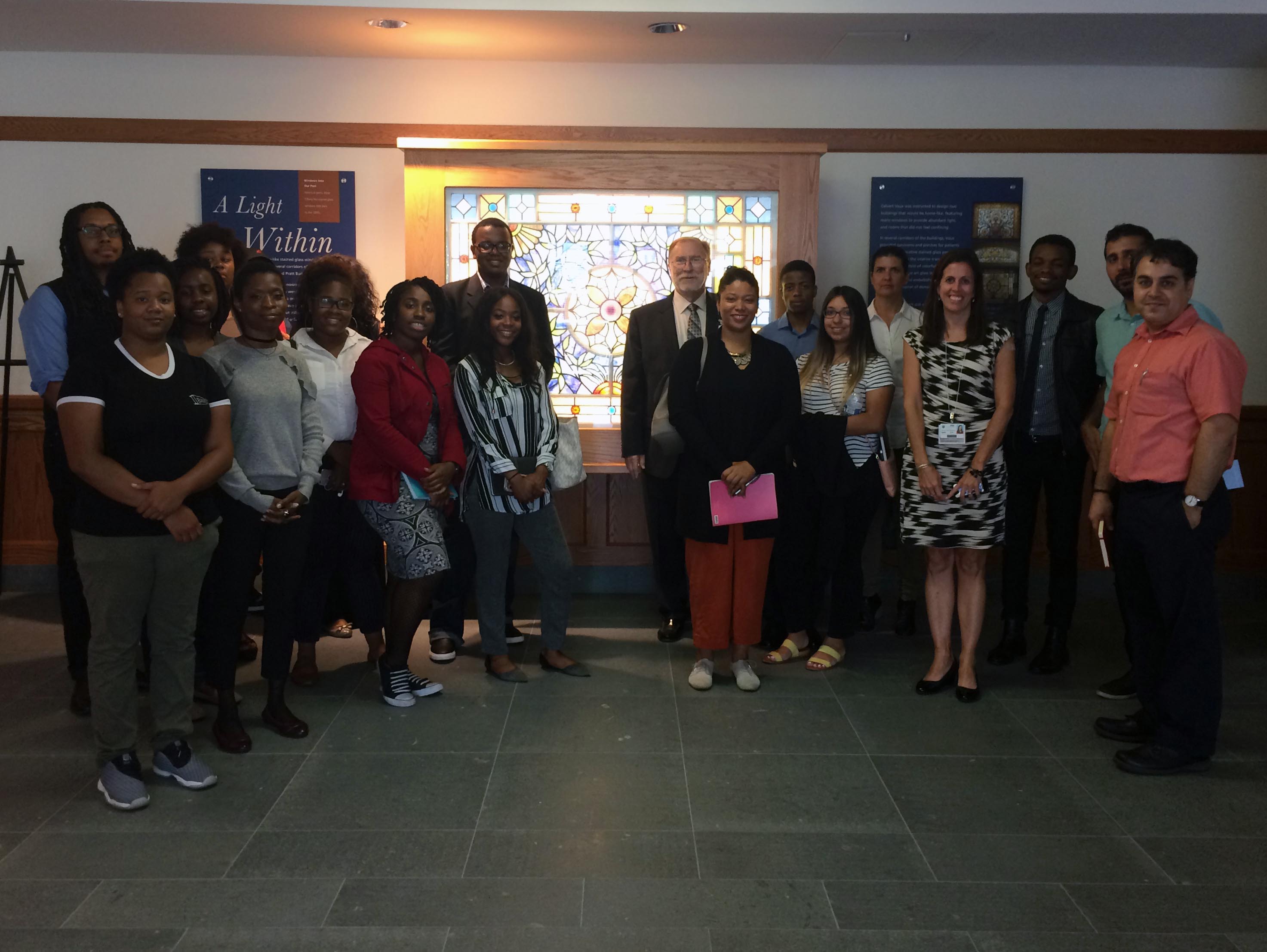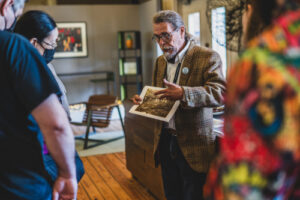
Baltimore, MD (December 13, 2017) – Students representing a range of disciplines at Morgan State, including architecture and planning, biology, political science, psychology, and medical technology, are taking a new approach to integrating design thinking into public health challenges. Most recently, 18 members of Morgan State’s Design Health Club and Student Research Center (SRC) toured the Sheppard Pratt mental health hospital as part of their ongoing efforts to better understand and integrate health outcomes as part of the design process.
“Trips like this one further our goal of educating ourselves in what healthy design is, and increase our ability to design healthy spaces,” says Colleen Sagers, senior at Morgan State and president of the Design Health club. “While many of us may never work in or design a psychiatric hospital, an improved understanding of how design can improve mental health increases our ability to create homes, schools, community centers, private and public spaces, and public policies that generate holistic individual and community health.”
The lessons from the October field trip were reinforced by other initiatives at Morgan State focusing on the connection between health and design, including two recent lectures by area architects on the topics of Optimizing Healthcare through Architecture, and Designing for the Highest Level of Care. Morgan State’s efforts are part of a growing national movement to connect design solutions to public health outcomes. As a member of the Design and Health Research Consortium, a collaboration of the AIA and the Association of Collegiate Schools of Architecture (ACSA), Morgan State is working to advance university-led research in the area of design and health.
“We started our Design Health initiative in 2014, after we realized there was no infrastructure at the school to study this, but there was a demand, especially with the major public health facilities in our area, along with the needs of underserved communities,” explains Mohammad Gharipour, professor, School of Architecture and Planning at Morgan State and the founder of Community, Design, and Health Forum. “We organized lecture series and then a symposium, with the goal of building a collaborative learning environment for architects, planners, and public health experts from communities that aren’t always well-represented in this field.”
Over the past few years, the initiative has expanded to include class offerings focused on health and the built environment. As part of this initiative, a student Design Health club was started to engage undergraduate and graduate students from variety of disciplines in design-health dialogue. This club has been part of Student Research Center (SRC), which is supported by ASCEND, an NIH funded initiative at Morgan State University. ASCEND also provided support for Dr. Gharipour to design a new course on health and built environment. This course was offered in Spring and Fall 2017, and the Design Health club is currently working on plans for a multi-semester course that would tie research from one semester into a design-build project during the following semester.
Morgan State has also collaborated closely with AIA Baltimore Health and Wellness Committee on efforts to connect the students with practitioners and increase preparation for internships and job opportunities. “The Health and Wellness Committee’s mission is to inspire innovation, advance knowledge, elevated development in healthcare design, and discuss community wellness strategies among members of the architecture, engineering, and construction industry, providers, educators, students, and local community members,” said Health and Wellness Committee co-chair Heather Rustici. “We’ve enjoyed working with Morgan State faculty on programs that bring students and professionals together for a variety of events that support that mission,” added Health and Wellness Committee co-chair David Watts, AIA.
“If you don’t spend time planning for health in design, then you might end up designing something unhealthy without really considering it,” says Sager. “At Morgan State, we’ve always focused on urban environments and underserved populations, so making health outcomes a key part of our thinking is vital to our mission. We want to learn to create buildings that help everyone.”
Morgan State Architecture Students Expand Exploration of Design Solutions to Public Health Challenges
Latest Member News

March 5, 2024 / Member News
Hord Coplan Macht Principal Appointed as First Black Chair to Maryland State Board of Architects

December 19, 2023 / Member News
Baltimore Architecture Foundation’s 2023 Year in Review